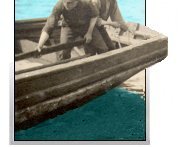Located on the eastern side of the Great Northern Peninsula, about 16 kilometres south of Englee, Hooping Harbour was
settled in the 19th century, though it was likely used as a seasonal fishing station for both the French and English in the
18th century. Initially called Sansfond by the French, a reference to the deep water of the harbour, Captain Cook charted
Hooping Harbour in 1775. Fishing was the economic mainstay but good timber resources in the area also supported a sawmill.
Methodism predominated in the early 20th century but by the time of Confederation, a new denomination, the Apostolic Faith,
had become established in Hooping Harbour and nearby communities. The Apostolic Faith came to play a central role in the
resettlement of the community. After an unsuccessful attempt in 1969 to have Hooping Harbour designated as a "growth centre"
under the Federal-Provincial Resettlement Program, Pastor Booth Reid of the Apostolic Faith Church, by then the predominant
denomination, convinced residents to resettle.
Englee attracted 73 of those residents while 16 went to Roddickton. The majority,
181, went to Bide Arm, a new community established for this purpose located between Roddickton and Englee. A few others found their
way to Woodstock, Sops Arm and Corner Brook. By establishing Bide Arm as their new home, Hooping Harbour residents had flouted
convention; it was the only new community created under resettlement in the 1950s and 1960s.
The images presented here show life
in Hooping Harbour before and after resettlement and also of the Apostolic Church being moved to Bide Arm. There are also images
of Bide Arm that show buildings moved from Hooping Harbour and the planned service road for the fishery along the shoreline, an
unusual feature in a Newfoundland fishing communities.


